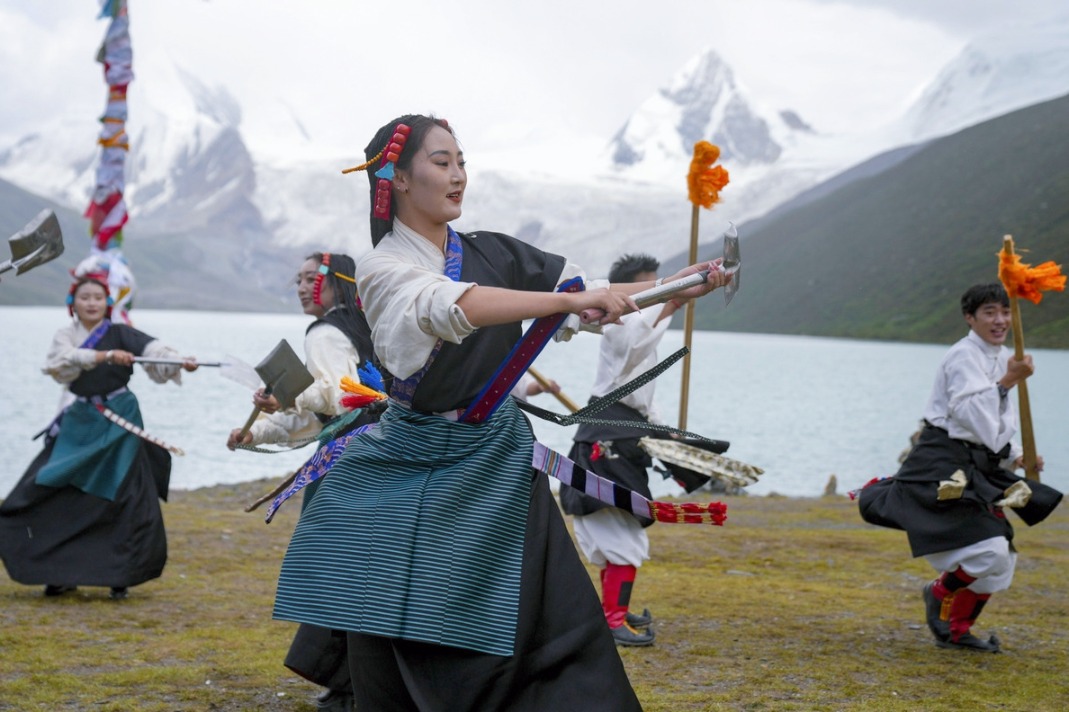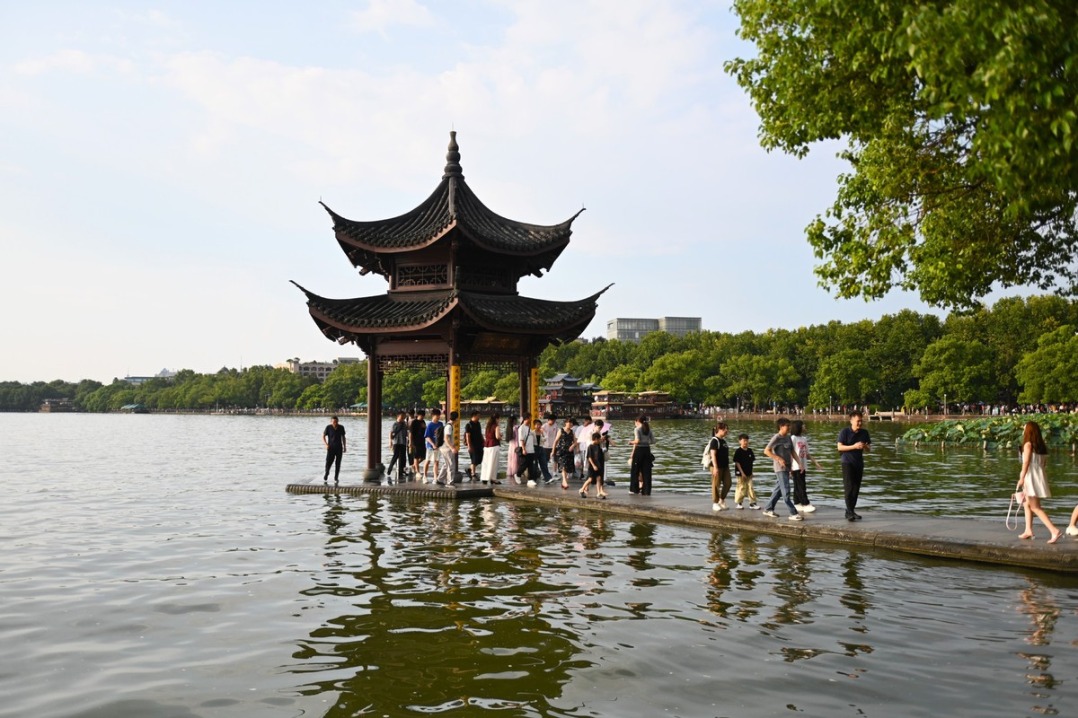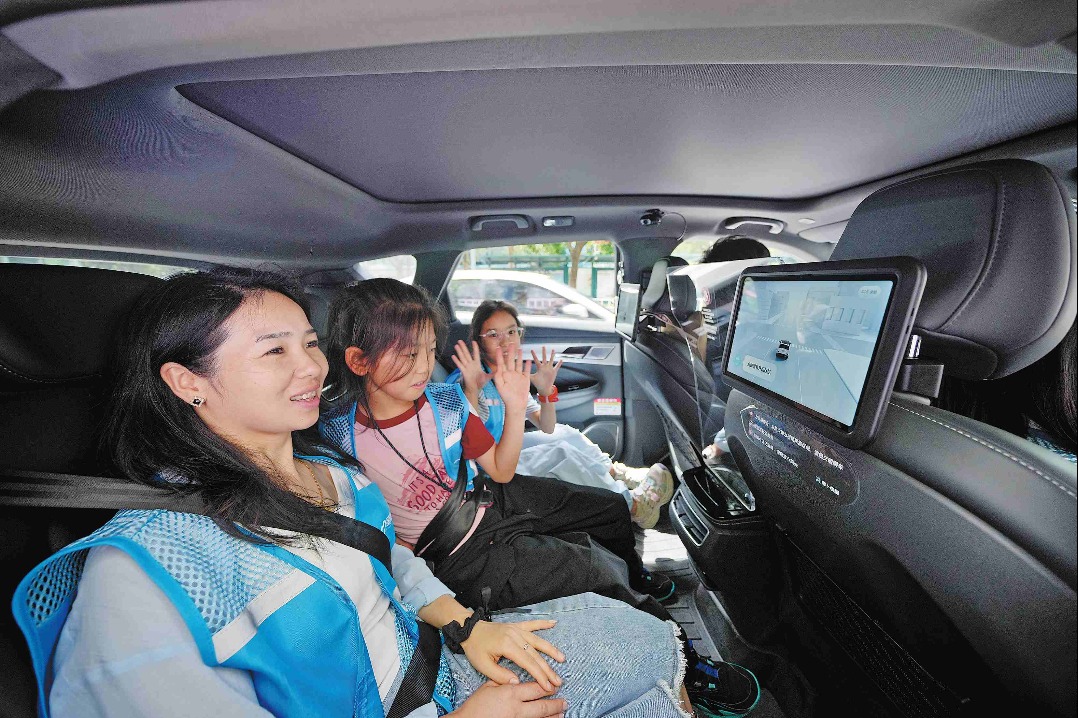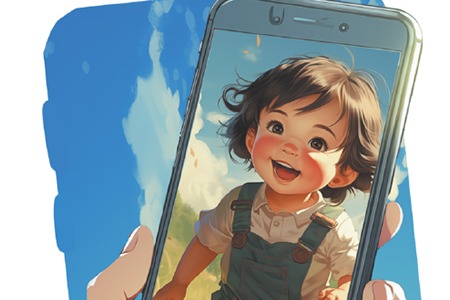Traditions are at the heart of Spring Festival
Exhibition builds anticipation for family reunions, celebratory rituals, regional cuisine and good fortune, Lin Qi reports.

The completed dragon boat by Lin Shunkui, a seasoned handicraft artist living in Dongcai village, Beibaixiang town, Yueqing, Zhejiang province, will be burned on the village grounds on the night of the Lantern Festival, which falls on the 15th day of the first month of the Chinese lunisolar calendar.
The colorful wooden dragon boat will burn in a huge fire — a climactic ritual during Spring Festival celebrations — when villagers will wish away bad energy and hope that good luck will arrive.
The dragon boat, standing several meters in height and length, is called the "decorated dragon head", a handicraft traced to the Ming Dynasty (1368-1644) in Yueqing.
Lin, a national-level inheritor born in 1956, is the fifth generation of his family to carry on the intangible cultural heritage.
It takes him several months to even a year to make the heavily decorated dragon as villagers commission these works from him.
The multistoried boat displays layers of bright colors and is richly decorated with engraved gates and windows, and mythological and folk tale characters are installed on each level. They are connected with hundreds of gears and move in different directions controlled by a handler at the bottom of the dragon.
The dragon is not built for sailing in water and, after it is complete, will be transported to the village's ancestral hall the day before the Lantern Festival for worshipping.
The next day, villagers will push the wheeled boat for a parade and dance past every household to drive away evil spirits, bid farewell to the past and anticipate good fortune, prosperity and harmony in the new year.
This time-consuming craft won Lin the top prize in folk arts at the Shanhua (mountain flower) Awards in 2022 by the China Folk Literature and Arts Association.
Some of Lin's dragons have survived and he has one placed in front of his ancestral house so visitors can learn about this unique tradition.
"I will not allow the dragon to become 'extinct' in my generation," he says. "I want to sail it elsewhere and everywhere into the visions of more people."
One of Lin's dragon boats is displayed at the Chinese Traditional Culture Museum in Beijing.
A highlight of the Guo Nian: Exhibition of the Spring Festival, running until March 2, is the boat mounted above to elevate the festive mood ahead of the Chinese New Year, which falls on Jan 29. Lin's dragon boat thrills visitors with a glimpse into the richness and diversity of Chinese New Year celebrations. Guo Nian means celebrating the arrival of the New Year.
On Dec 4, Spring Festival and its social practices for celebrating the traditional New Year were added to UNESCO's Representative List of the Intangible Cultural Heritage of Humanity.
The practices include celebration preparations, clan worshipping activities and fairs, and folk performances shared by communities across the country, with differences varying in the southern, northern, eastern and western regions. The celebrations are held to bind family and community members and teach morality, family values and solidarity. Arts and crafts, photos, interactive installations and performances featured at the exhibition give vivid demonstrations of New Year festivities.
Wang Chenyang, Party secretary of the museum and the exhibition's chief planner, says the exhibition covers the whole process of preparing for and celebrating the traditional New Year, bringing an immersive experience.
The first day of the solar term dongzhi, or the Winter Solstice, is the longest night of the year with the shortest daytime.
There's an old saying that dongzhi is more significant than the New Year. After that day, the days start to become longer and the nights shorter, and anticipation for the New Year and spring grows stronger.
"The opening date of the exhibition on Dec 21 (the past dongzhi) added spice to the festive mood," Wang says.
The exhibition features various national intangible cultural heritage items that reflect unique festive customs from region to region. For example, a black pagoda-like installation is meant to replicate the custom of a coal pile fire prevailing from Huairen city, Shanxi province, known for its rich coal reserves. There, people make a pile of big coal bricks and create a bonfire while making wishes for a thriving new year.
Wang says that besides community-based celebrations, the exhibition also highlights the rituals and activities held in homes to strengthen family ties. "In a time when people migrate and travel outside their hometowns, returning home for Spring Festival is important to many," he adds.
At the exhibition, an altar table has been re-created to show how people in Gaomi, Shandong province, prepare for worship.
On the table are articles of offerings, such as colored Gaomi steamed buns that have intricate relief patterns. Above the altar table, classical Chinese ancestor paintings are hung on the wall.
Dining together is another important ritual for New Year celebrations.
A copper hot pot rests in the center of a large round dining table at the exhibition — a culinary tradition at family reunions during Spring Festival — accentuating a feeling of warmth and excitement for family gatherings.
Digital images of different dishes from across the country are projected on the table to show its gastronomic diversity.
"Paying tribute to our ancestors, sharing details of our lives and work with parents, and preparing food for ancestor worship and the family reunion feast are activities that evoke the best memories of New Year celebrations," Wang says.
"It is personal experiences that make us feel touched and remembered. We want to carry on these traditions."
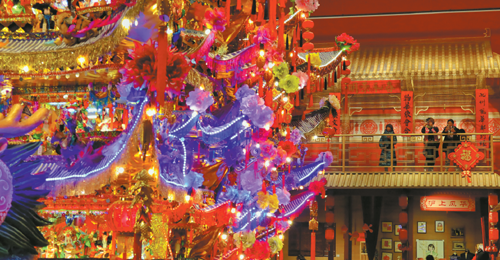


Today's Top News
- Pakistani minister hails high-tech ties with China
- China-US trade ties key for world economy
- Prospering Xizang sees surge in overseas visitors
- Central govt has final say on reincarnation of Dalai Lama
- Manila fueling tensions with its solicitations
- Bundling trade with other issues coercive approach demolishing rules-based order
















